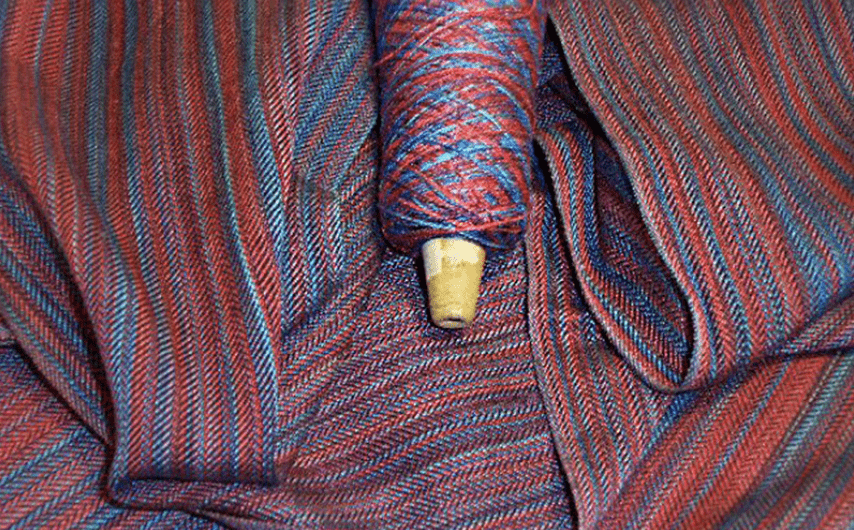Class 7 Exam > Class 7 Notes > Advance Learner Course: Science Class 7 > MCQ - Synthetic Fibers And Plastics
MCQ - Synthetic Fibers And Plastics | Advance Learner Course: Science Class 7 PDF Download
Q1. Fibre obtained by chemical treatment of wood pulp is called ___________.
(a) Natural silk
(b) Rayon
(c) Nylon
(d) Polyester
Correct Answer is Option (b)
- Natural Silk: The protein fibre of silk is composed mainly of fibroin and is produced by certain insect larvae to form cocoons.
- Rayon: Rayon is a manufactured regenerated cellulose fibre. It is made from purified cellulose, primarily from wood pulp, which is chemically converted into a soluble compound.
Rayon Fabric
Q2. Nylon is obtained by __________.
(a) Treating wood pulp
(b) Solidifying water
(c) Mixing coal, air and water
(d) Mixing chemicals
Correct Answer is Option (c)
Q3. _____________ is stronger than steel wire.
(a) Cotton fibre
(b) Silk thread
(c) Plastic thread
(d) Nylon fibre
(a) Cotton fibre
(b) Silk thread
(c) Plastic thread
(d) Nylon fibre
Correct Answer is Option (d)
Q4. ________ is polyester used for making bottles, utensils, films.
(a) Leather
(b) Nylon
(c) PET
(d) Plastic
(a) Leather
(b) Nylon
(c) PET
(d) Plastic
Correct Answer is Option (c)
Q5. Polyester is repeating units of _______.
(a) Ether
(b) Beads
(c) Carbon
(d) Ester
(a) Ether
(b) Beads
(c) Carbon
(d) Ester
Correct Answer is Option (d)
Q6. _______ is a synthetic fibre used for making woollen clothes.
(a) Acrylic
(b) Polyester
(c) Fibre
(d) Cotton
(a) Acrylic
(b) Polyester
(c) Fibre
(d) Cotton
Correct Answer is Option (a)
Q7. You must not wear synthetic fibres while working with fire because _______.
(a) They make you feel cold and so you may get a frost-bite
(b) They are lustrous and so they shine under the flame
(c) They melt on heating and stick to your body when they catch fire
(d) None of the above
(a) They make you feel cold and so you may get a frost-bite
(b) They are lustrous and so they shine under the flame
(c) They melt on heating and stick to your body when they catch fire
(d) None of the above
Correct Answer is Option (c)
Q8. Synthetic fibres are made using ______ as raw materials.
(a) Woolen products
(b) Polymers
(c) Cotton
(d) Petrochemicals
(a) Woolen products
(b) Polymers
(c) Cotton
(d) Petrochemicals
Correct Answer is Option (d)
Synthetic fibres are synthesised from raw material called petrochemicals.
Q9. _________ is used commonly for making parachute ropes.
(a) Polythene
(b) Polyester
(c) Nylon
(d) Silk
(a) Polythene
(b) Polyester
(c) Nylon
(d) Silk
Correct Answer is Option (c)
Nylon fibres are very strong so they are used for making parachutes and ropes for rock-climbing.
Q10. ___________ is a popular polyester.
(a) Plastic
(b) Polythene
(c) Rayon
(d) Terelyne
(a) Plastic
(b) Polythene
(c) Rayon
(d) Terelyne
Correct Answer is Option (d)
The document MCQ - Synthetic Fibers And Plastics | Advance Learner Course: Science Class 7 is a part of the Class 7 Course Advance Learner Course: Science Class 7.
All you need of Class 7 at this link: Class 7
|
18 videos|34 docs|19 tests
|
FAQs on MCQ - Synthetic Fibers And Plastics - Advance Learner Course: Science Class 7
| 1. What are synthetic fibers? |  |
Ans. Synthetic fibers are man-made fibers that are produced through chemical processes. These fibers are made of polymers and are highly durable, strong, and resistant to wear and tear. Some examples of synthetic fibers are nylon, polyester, and acrylic.
| 2. What are plastics? |  |
Ans. Plastics are a group of synthetic materials that are made from organic polymers. These materials can be molded into various shapes and forms and are highly durable, lightweight, and resistant to corrosion. Some examples of plastics are polyethylene, polypropylene, and polystyrene.
| 3. What are the advantages of using synthetic fibers and plastics? |  |
Ans. The advantages of using synthetic fibers and plastics are their durability, strength, and resistance to wear and tear. They can be easily molded into various shapes and forms and are lightweight, making them ideal for use in a variety of applications. They are also resistant to corrosion and can withstand harsh environmental conditions.
| 4. What are the disadvantages of using synthetic fibers and plastics? |  |
Ans. The disadvantages of using synthetic fibers and plastics are their non-biodegradable nature, which means they do not decompose easily and can harm the environment. They are also highly flammable and can release toxic fumes when burned. In addition, they are not as breathable as natural fibers and can cause skin irritation and other health problems.
| 5. How can we reduce the negative impact of synthetic fibers and plastics on the environment? |  |
Ans. We can reduce the negative impact of synthetic fibers and plastics on the environment by recycling them and using them in other applications. We can also reduce our use of these materials by using more natural and sustainable materials. Additionally, we can dispose of these materials properly and avoid burning them, which can release toxic fumes into the air.
Related Searches


















